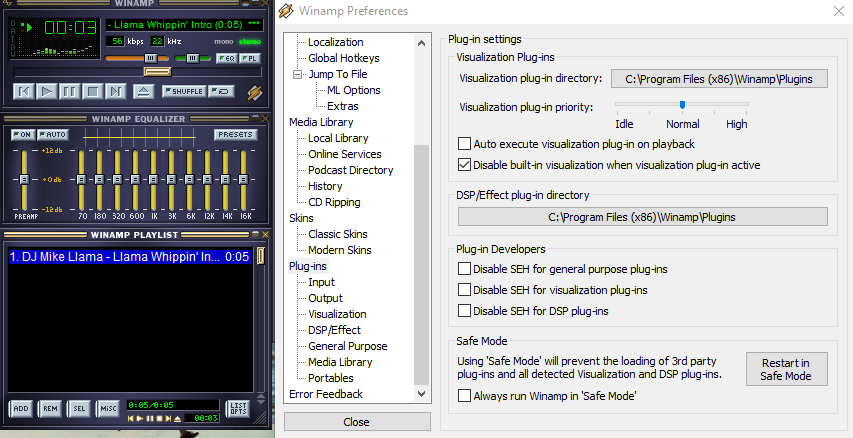
Everyone who bought an iPod switched to iTunes for listening to music, because iTunes was more-or-less required for loading up an iPod with music-and a lot of people bought iPods.Įven if you didn’t own an iPod, iTunes was attractive. By 2003 iTunes came out for the PC and that was the beginning of the end for Winamp. In 2001 Apple launched the iPod, and it caught on in a big way.
#WINAMP ISO SOFTWARE#
primary users were music fans, geeks, and people who cared about what bitrate their MP3s were encoded at-in other words, the key users of Winamp in the early 2000s were allergic to AOL as a company.īundling AOL software and offers with Winamp cheapened the software in users’ eyes. Here’s Cyrus Farivar, writing for Ars Technica in a very good feature about Winamp’s decline: This was a major turnoff for Winamp users. Eventually, AOL decided software like Winamp was a promotional opportunity for the dial-up service, and soon installing Winamp meant declining offers for “free” AOL subscriptions. That massive revenue stream made it hard to prioritize other projects-even those for which AOL paid millions. RELATED: RIP AIM, the Messaging App AOL Never WantedĪOL, meanwhile, was still making ridiculous sums of money with its infamously sandboxed dial-up service.
#WINAMP ISO PRO#
Page views to the Winamp website brought in a big chunk of ad revenue, sure, and thousands of people paid $10 for the Pro version of the software, but that was about it regarding revenue. That’s quite the payout for a four-person team, but AOL never really knew what to do with what they bought. In June of 1999, AOL acquired Nullsoft (the company behind Winamp) for $80 million. Our story’s ending begins with a buyout, like many other 90s tech stories.
#WINAMP ISO SKIN#
Part of the appeal came from the community: a plugin and skin ecosystem allowed designers and developers to customize things in surprising ways, and music nerds loved having that kind of control. It quickly became a hit, despite only having a four-person team behind it. So for SURE it was the bitrate in my case, and possibly in 90% of cases with the same problem.Winamp was lightweight, customizable, and made listening to music easier than any player that came before it. I tested this at first, without changing the bitrate plugin setting- like to delete the file and bring it back in, and it DID NOT work. So i just deleted teh playlist, made a new one called Instrumentals again, and dragged all the files from the Instrumentals folder back in. In my case it was easy, because I had en entire playlist called Instrumentals and all the files in there were from a folder called instrumentals. it worked for me.ĭelete the files that weren't playing and bring them back in from the source folder. Preferences in WA, change the field in Plugins MPEG decoder to something way lower. Now WA will play any audio file above the bitrate you specified. The only thing is you have to delete them from your playlist and drop them back in. Just to be safe, I just entered a lower number magically transmitted to me by the frequency gods of music and tech, and entered 92.Īfter the ALL my files that never played started to play. There, you just have to see which bitrate is the lowest it WA won't play.in my case it was anything below 119KBPS.
#WINAMP ISO FULL#
If you select that and press configured, there is a field in the Full File Buffer sections where you can change the setting called 'buffer the entire file to disk is file is smaller the "X" bitrate'.

So, there's a plugin in winamp called the MPEG decoder. You will notice there is a certain bitrate that doesn't play. And It wasn't complicated nor goblins that required 9000 updates or you to incinerate your sound card and drivers, nor uninstalling and the plethora of things suggested here that DID NOT work.īasically its the bitrate- if you right click a file and go to details there's a bitrate- notice which files winamp plays and does not play. It wasn't that the files were "corrupted". *NOTE it wasn't that they had been moved.


 0 kommentar(er)
0 kommentar(er)
